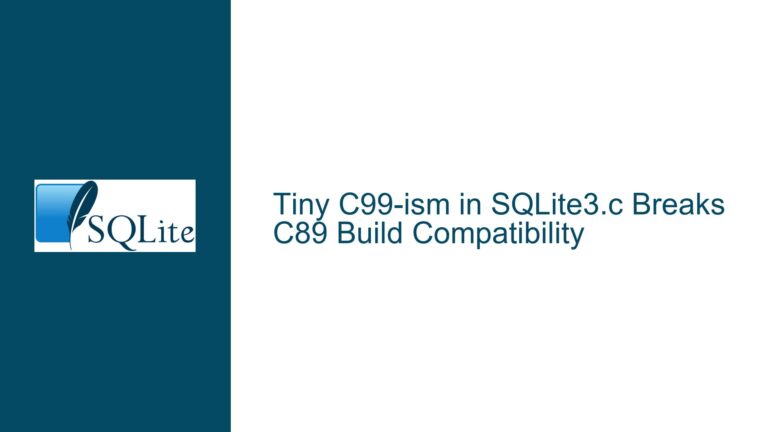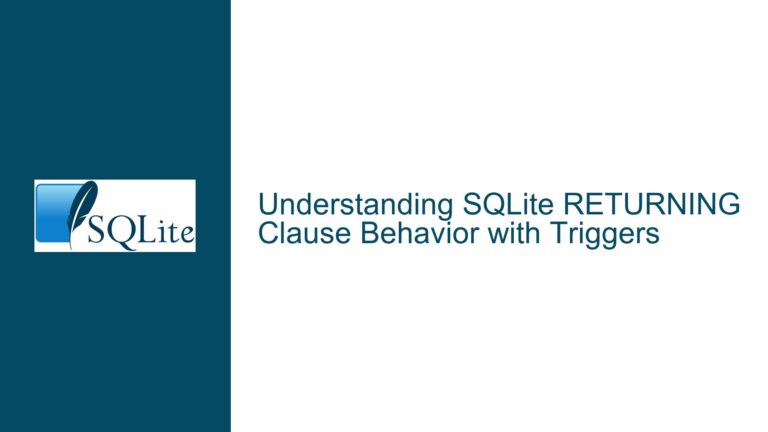Tiny C99-ism in SQLite3.c Breaks C89 Build Compatibility
SQLite3.c Compilation Error Due to Mixed Declarations and Code The core issue revolves around a compilation error encountered when attempting to build SQLite3 using the C89 standard. The error message specifically points to a violation of the ISO C90 (commonly referred to as C89) standard, which prohibits mixed declarations and code within a function. The…









